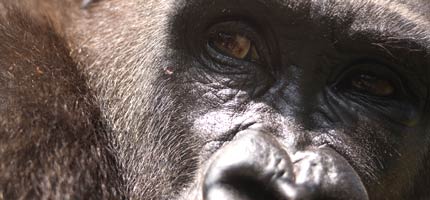
Protected areas can help endangered species such as gorillas
Eighty per cent of the world's forests have already been lost and of what remains, only eight per cent is currently protected. So to maintain biodiversity and limit climate change, there needs to be a real commitment to ring-fence large areas of forest for protection.
To be properly effective, these protected areas need to be big. Large animals such as tigers, bears, elephants and orang utans need extensive areas over which they can roam and feed. If their territories are fragmented by roads, towns or industry, they simply don't have enough space to survive.
Responsible forest management
This doesn't mean that all forestry activities should stop, just that they should be done responsibly. As well as protecting regions that have been relatively untouched by industrial exploitation, it's essential to have other areas where timber can be harvested in a responsible way without laying waste to the rest of the forest.
Vanishing forestsIn 2006, we released a detailed report that graphically demonstrated just how much forest remains across the world.
Find out more
In these areas, logging needs to have a low environmental impact so timber can be extracted selectively, leaving other trees undamaged, and the forest also needs time to recover and regrow.
It's also crucial that all activities are done with the full, informed consent of local communities who depend on the forest for their way of life.
Government responsibilities
It's up to forest nations to establish protected areas, but the wider international community also has its part to play. It needs to recognise the value of ancient forests, not only to maintain biodiversity, but large areas of intact forest are also an essential component in the fight against climate change.
A stepping stone on the way to setting up protected areas is establishing moratoria on logging in vulnerable areas. For instance, a two-year moratorium on deforestation for soya cultivation is currently in place in Brazil.
These interim measures can allow sound forest protection plans to be developed, along with finance mechanisms to provide the funds for proper policing and management of these areas. Without these measures, we risk losing what remains of our ancient forests.


